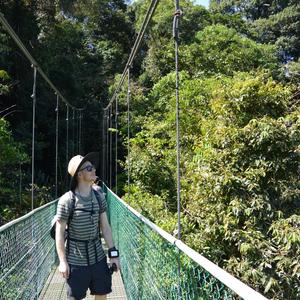One of Central America’s most captivating destinations, Nicaragua is home to pristine rainforests, beautiful colonial architecture, towering volcanoes and vast lakes. Unlike its neighbour, Costa Rica, Nicaragua has less of an influx of tourism, due to its dubious reputation, but this is just one of the reasons we love Nicaragua. There is so much to see and do, without the overcrowded tourism, making it the perfect off the beaten track destination!
We have put together a guide of our favourite places to visit in Nicaragua. So let's jump into it:
Cerro Negro Volcano

This fierce little volcano (a mere 675m in height) is the newest in the western hemisphere and the most unpredictable of León’s Maribios Volcano range. As its name suggests, Cerro Negro is jet-black, made up of black gravel, solidified black lava flows and massive black sand dunes. NASA used Cerro Negro to understand the rocks they found on Mars, and hiking on the cone is a truly surreal otherworldly experience.
Its hardpack fine black gravel and sand also makes it a favoured playground for visitors. What started with adapted snowboards being shredded and destroyed by gravel gradually morphed into custom-built volcano sledges made in León. Volcano boarding converts a 45-minute hike to the summit into a howling run down the west face as you ride the custom boards and wear special boarding suits, goggles and gloves.
Corn Islands
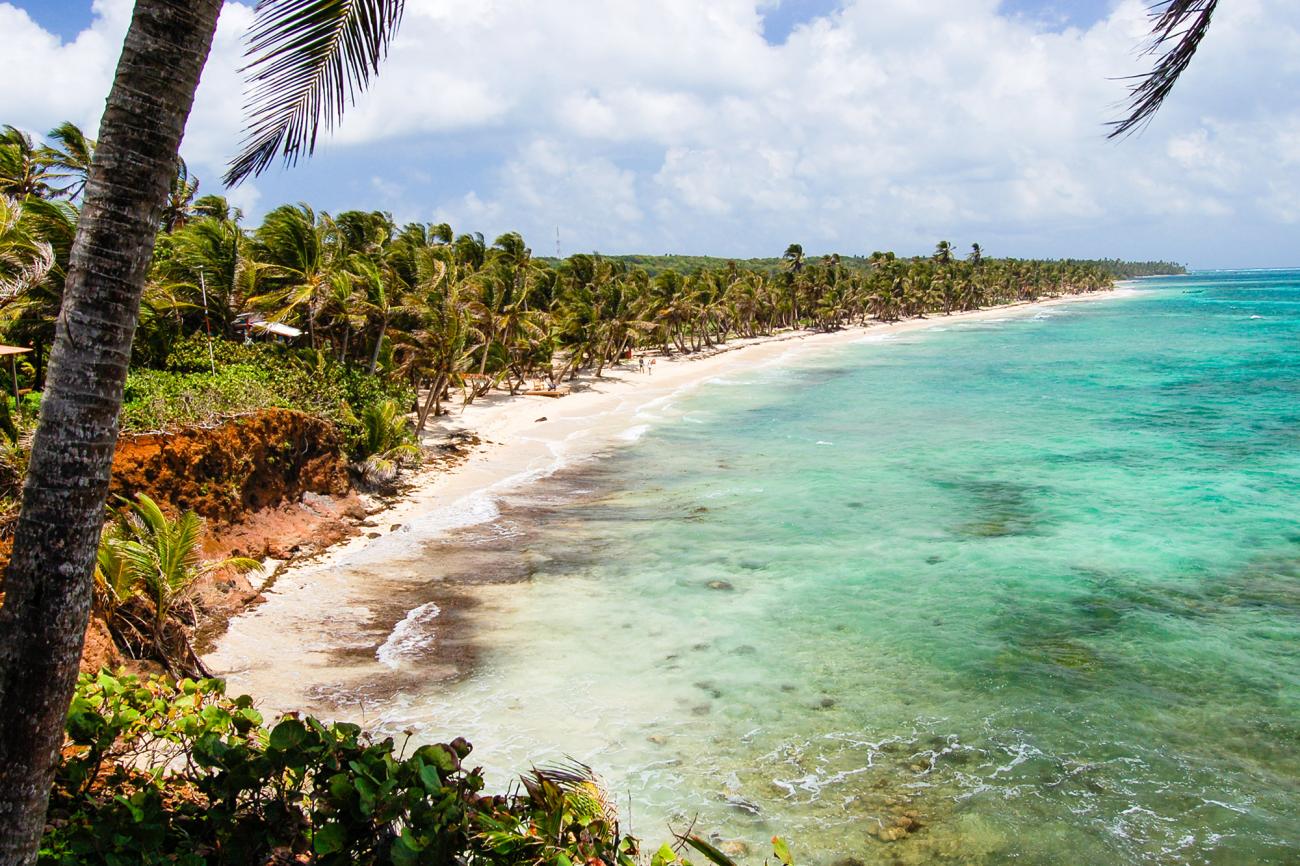
This is the Caribbean as it used to be, relaxed islands that live mainly off fishing and a bit of tourism. There are small family-owned hotels on both islands which are modest and comfortable, while the locals are extremely friendly, and the reefs bathed in crystal clear turquoise waters. Both Big Corn Island and Little Corn Island are lined with spectacular white sandy beaches, and although small, offer a beautiful and peaceful spot to relax.
From here you can explore the stunning reefs, and for those interested, there are dive operators on both islands. You will find the reefs to be better off the beaches of Little Corn Island whereas the diving is superior around Big Corn Island.
El Castillo
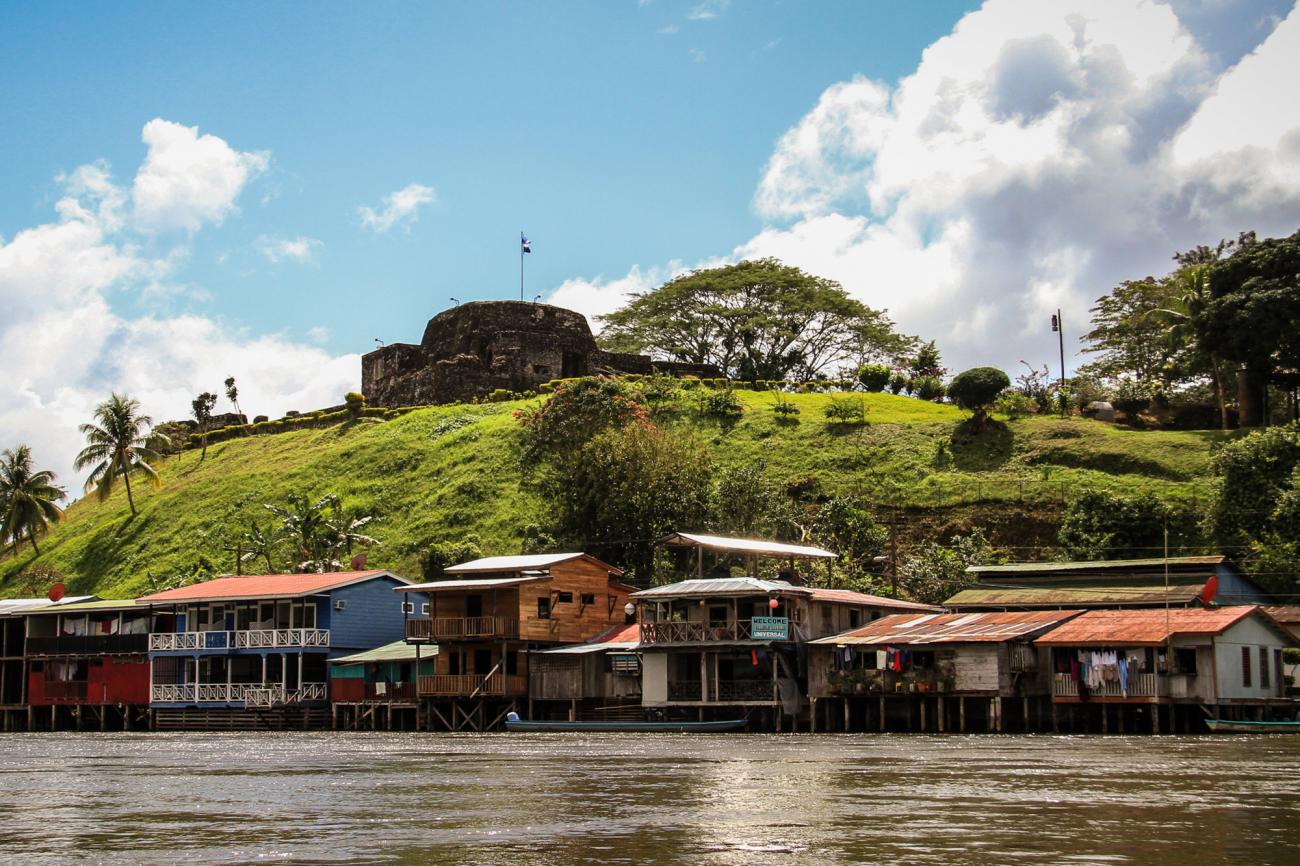
The principal settlement on the San Juan River, El Castillo (despite its name) is built around a fortress, not a castle. When built-in 1675 it was one of the biggest fortresses in the Americas and very effective at repelling both pirates and the British Navy, until a young Lord Nelson, then a captain, attacked it from the rear flank (now called Lomas de Nelson).
The fortress provides a classic view of the San Juan River and there is good lodging near the riverfront rapids, a feature that also helped to protect the town. Today it is a pleasant and friendly base to use for exploring the Indio-Maíz Biological Reserve by boat and on foot, with several traditional river restaurants and a butterfly farm in town. El Castillo is also the last town on the southside of the San Juan in Nicaragua, going downriver to the Caribbean Sea.
Estelí

Estelí is the tobacco capital of Nicaragua, where fertile highland soils are said to be superior even to Cuba for tobacco growing. This has attracted Cuban ex-pats from both Miami and Cuba and created consistently top-rated cigars which are rolled in the many factors of Estelí, stuffed and wrapped with Nicaragua tobacco and other blends from around the world.
Tisey Nature Reserve is nearby on the continental divide behind Estelí, with tropical pine forests and cloud forest, as well as Encino Oak groves and the Estanzuela Cascade which is particularly impressive during the wet period and popular for rappelling in the dry season. Estelí is also known for its revolutionary heroes and there is a museum dedicated to their sacrifice as well as an attractive Cathedral and access to the Miraflor Nature Reserve where community tourism is possible.
Granada
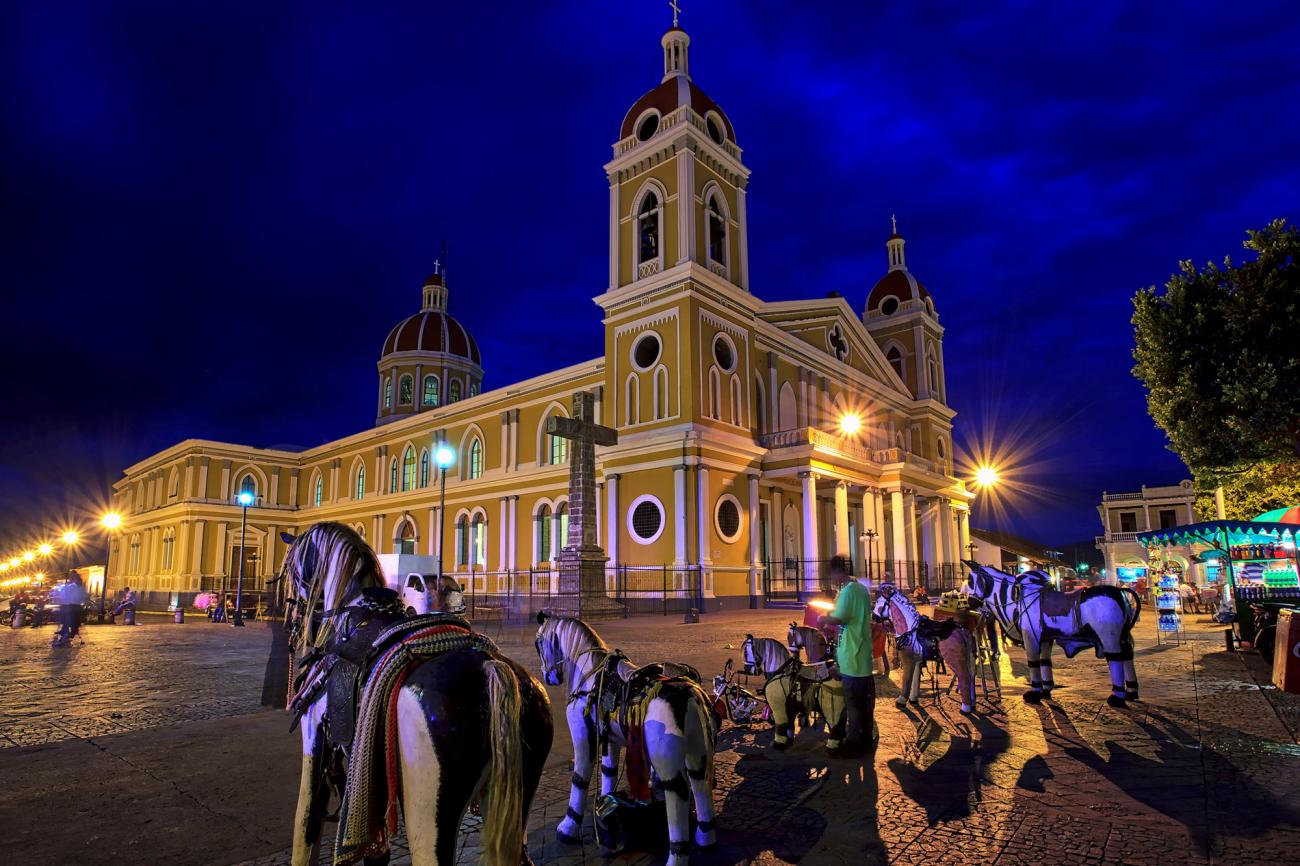
Granada is Nicaragua’s most famous destination, mostly for the beauty of its spacious and brightly painted Andalusian-styled Spanish colonial homes. The historic centre is full of large square homes with lush interior gardens protected by thick adobe walls. Located on the western shores of Lake Nicaragua, the city was sacked numerous times by pirates during Spanish rule, as Granada was effectively the westernmost Caribbean port thanks to boat traffic across the lake and the San Juan River, making it a key commercial centre.
Today, tourism runs the economy and Granada is blessed with numerous good restaurants and boutique hotels and is a great base from which to explore many nearby attractions, including day trips to Isletas Archipelago, Mombacho and Masaya Volcano, Apoyo Crater Lake and Los Pueblos Blancos.
Laguna de Apoyo

A crater lake, Laguna de Apoyo, is so huge that wind can whip up waves good enough for windsurfing. The lake, which is about 20,000 years old, is fed by volcanic fumaroles, which warm the slightly salty waters of the lake. Visitors can rent kayaks, go swimming, or simply enjoy the views of the forested crater. Divers with a craving for a crater-lake submersion can explore the thermal vents, and check out the endemic fish that live here.
Lake Nicaragua
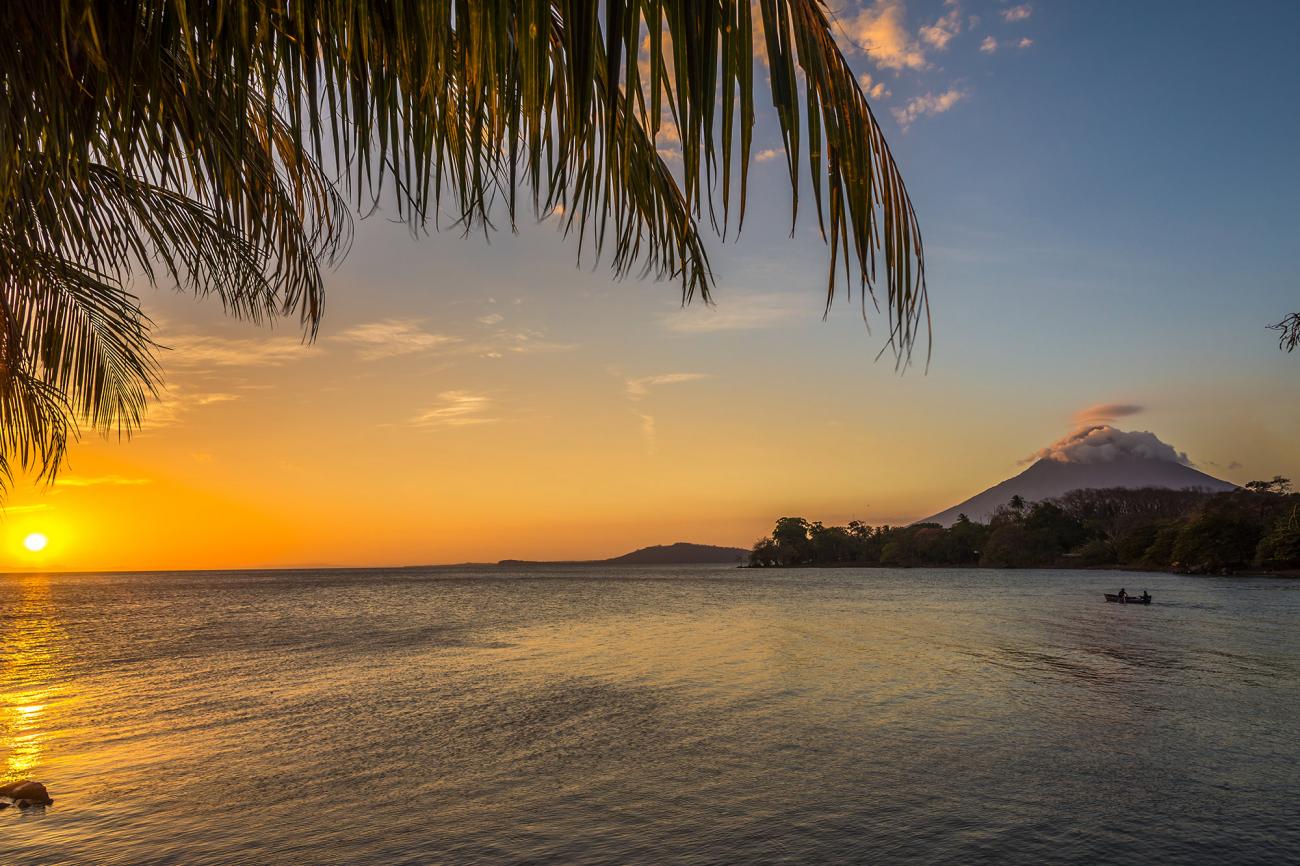
Lake Nicaragua stands as the centrepiece of the country's mini-rift valley and is an integral part of the Nicaraguan psyche, being one of the core reasons Nicaraguans call their country land of lakes and volcanoes. Dubbed the ‘Freshwater Sea’ (Mar Dulce) by the Spanish, Lago de Nicaragua, also known as Cocibolca, covers 8,264 sq-km, making it the largest body of freshwater in Central America and the largest rain-formed lake in the Americas.
The freshwater lake drains into the Caribbean Sea, via the San Juan River and is punctuated by more than 450 volcanic islands, including three archipelagos, a volcanic national park and the dual-volcano Ometepe Island Biosphere Reserve. This unique body of warm water is home to freshwater sawtooth fish, bull sharks, sardines and gar fish.
Las Isletas

Just five minutes from Granada, in the warm waters of Lake Nicaragua, is the chain of 354 islands called Las Isletas. The basalt rock piles are covered in lush vegetation and birdlife is rich, with plenty of egrets, cormorants, ospreys, kingfishers and oropendolas.
The islands can be visited by motorboat, electric boat or kayaks, an excellent way to appreciate the birdlife. The age of the islands is unknown, but it is believed they were created by a massive eruption by the Mombacho Volcano that watches over the lake and islands to the west. Some islands have simple lodging, but one, in particular, has a very fine ecolodge that we feature in our tour Lakes and Volcanoes.
Las Peñitas & Juan Venado
Just a 20-minute drive away from colonial León, Las Peñitas and Poneloya are both beaches used mainly by Nicaraguans during the end of the dry season, from February to April. This is a fantastic place to spend an afternoon with a long lunch of red snapper cooked whole, bathed in tomatoes and onions. Riptides are very dangerous here, so swimming is only for the most experienced.
On the south end of Las Peñitas is an inlet full of artisan fishing boats and then the barrier island of Juan Venado. This is an important sea turtle nesting site (Aug-Jan), but also a critical mangrove forest very rich in flora and fauna with healthy populations of water birds, green iguanas and caimans. The reserve can be visited by hired motorboat or kayak, and the beach has a sea turtle nursery project to protect the eggs and hatchlings until their entrance to the sea.
León

León is the artistic and intellectual heart of Nicaragua, the colonial capital for three centuries and the former home of its three greatest poets, including the undisputed national hero Ruben Darío. Nicaragua’s second-largest city is normally full to the brim with students from around the country that come to study in its fine secondary schools and universities.
A UNESCO World Heritage building, the Cathedral of León is Central America’s largest temple, and despite sweltering year-round heat, the city enjoys an advantageous position set between the ruggedly majestic Maribios Volcanoes to the east and the crashing surf of the warm Pacific Ocean just 21 km to the west. The city is a base for volcano hiking and coastal kayaking and surfing, whereas culture tours highlight the city’s revolutionary history, colonial architecture and artistic traditions.
Los Guatuzos Wildlife Refuge

One of the top wildlife viewing experiences available in Nicaragua, the 43,750-ha Los Guatuzos Wildlife Refuge occupies the southern shores of Lake Nicaragua. With more than a dozen rivers running through the reserve, the Río Papaturro is the most popular for wildlife viewing, but a visit to Rio Zapote and Isla Zapote offers up a major nesting site for waterbirds which is also not to be missed.
The ecosystems could not be more diverse in this area, with a mixture of tropical dry forest, tropical wet forest, rainforest and extensive wetlands. Best of all are the many narrow rivers lined with gallery forest, the ideal situation for viewing wildlife. 400+ species of birds are joined by three species of monkey, countless reptiles, amphibians and a healthy Jaguar population.
Los Pueblos Blancos

The White Villages of Masaya and Granada are spread across a highland mesa that connects to rims of extinct volcanoes and are home to some of Nicaragua’s finest artisans and some of the country’s most unique festivals. Each town is known for specialised crafts, and although not all of them are still painted white, the villages do have Spanish colonial churches and a very industrious and independent populace.
Most famous of the villages are Diriomo, known for its stone church and native sweets, as well as San Juan de Oriente, whose potters have gained world fame. Catarina is also famed for its potted plants, baskets and unique viewpoint of Apoyo Crater lake, whereas Niquinohomo stands as the birthplace of national hero Augusto Sandino. Masatepe is also not to be missed, as here you will find Nicaragua’s finest handcrafted traditional furniture made in family workshops, as well as several traditional food restaurants worth noting.
Managua

A dramatic setting by any measure, Managua sprawls along the southern shores of Lake Managua and being covered mostly by trees, it’s almost invisible from the air. It is a capital without a city, pockmarked by six crater lakes within city limits. Beneath its improbable surface is dozens of fault lines, one of which destroyed the old centre in 1972.
Never rebuilt under seismologists’ orders, Managua grew out and around the lake valley with no centre or high-rise in sight. Visitors can tour the ruins of the old centre, enjoying revolutionary sites, the cultural palace, new and old Cathedral as well as one of the crater lakes that overlooks the entire invisible city.
It is a gritty place, and although it is home to much poverty and a serious waste problem, it also stands as one of the greenest capitals in the world by some measures, with no air pollution and relatively low traffic.
Masaya Volcano National Park

The smoking Santiago crater of the Masaya volcanic complex is one of the most unusual volcanoes in the Americas, maintaining a constant pool of lava (neither receding nor discharging) in its open crater. If smoke and lava levels permit, the inner churnings of an active volcano can be witnessed by peering inside the active crater.
It is a place of eerie beauty with rugged lunar landscapes punctuated by delicate plant life, remarkably resilient animal life and a panoramic view of Nicaragua’s great lake valley. Due to intense volcanic activity in recent years hiking is limited in the park, and most visits are restricted to 15 minutes.
Mombacho Volcano

Situated 10km outside of Granada is one of two cloud forests found in Nicaragua’s Pacific slope. The summit has five craters and is home to some of Nicaragua’s most magnificent cloud forest vegetation full of ferns, bromeliads and orchids, where you can find the endemic Mombacho salamander (Bolitoglossa mombachoensis) and nearly 200 species of birds.
The summit trail of Mombacho Volcano offers views of craters, and if clear, Granada, Lake Nicaragua and Las Isletas, whereas the more difficult trails Tigrillo and Puma reveal an even more extensive list of wildlife.
As well as enjoying the forest reserve, where you can even zip-line above the stunning forest canopy, the 1,344-metre-tall volcano is home to an abundance of additional activities, from visiting the local coffee plantations and ranches along the western slopes to learning more about the old indigo and current cacao production found at the eastern base.
Morgan’s Rock

Just north of San Juan Del Sur, on Nicaragua’s South Pacific Coast is one of the prettiest and most under-developed coastlines on the Pacific, with low mountains covered in the lush forest that meet tan and white sand beaches. Nestled in more than 4,000 acres of private coastal nature reserve on that coast is Morgan’s Rock Ecolodge, a destination in itself.
With a private beach and an extensive system of trails, Morgan’s Rock is one of the finest coastal tropical dry forests in Central America, with a gorgeous sweeping private beach and an estuary shared by less than 20 precious wooden bungalows that are perched on a cliff overlooking the sea. Along with kayaking and paddleboarding, visitors can mountain bike, nature hike and fish or surf on a nearby beach, but most find the thatched huts along the pristine beach attraction enough to pass a day or two. It's one of our favourite places to visit in Nicaragua to unwind and relax.
Ometepe Island
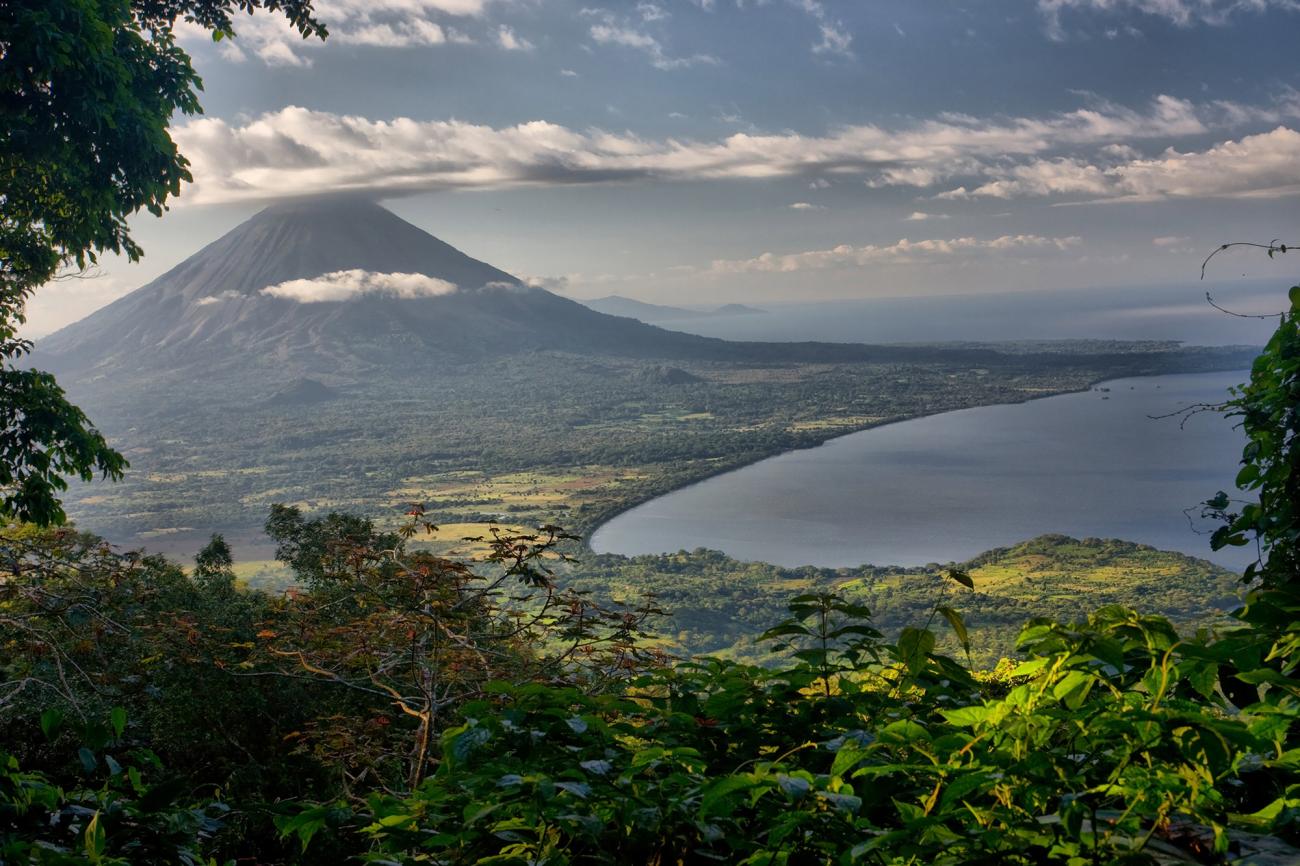
Ometepe’s two volcanoes rising out of Lake Nicaragua seem improbable, prehistoric and almost otherworldly. The two cones are nature reserves and they are connected by a 5-km wide lava-flow isthmus. Travel on the island is always in the shadow of one of its two Olympian volcanic cones.
The dominant mountain is the active Volcán Concepción (1,610 m), whilst Volcán Maderas (1,394m), which last erupted around 800 years ago, is now believed to be extinct. Isla de Ometepe is also home to many freshwater beaches, the most accessible of which is Playa Santo Domingo, a long stretch of grey sand on the Isthmus of Istián, a fertile lowland finger that connects the two volcanoes’ round bases.
Ometepe also has much to offer culture lovers, with unique traditions and pre-Columbian remains found on the island, and stands as a paradise for hikers, climbers, bikers and nature lovers; a must-see for anyone with a strong interest in culture and archaeology.
San Juan River

A historic waterway that is now best known for ecotourism, the 190km-long Río San Juan is the only river that drains Lake Nicaragua into the Caribbean Sea. For the visitor, it is an opportunity to experience rainforest flora and fauna and journey from Central America’s biggest lake, all the way to the thundering surf of Nicaragua’s eastern seaboard, while following in the wake of Spanish explorers, Dutch and French pirates and the British Navy.
The river was seen for centuries as the natural canal between the two great oceans, and today it provides access to Nicaragua’s finest lowland rainforest - the Indio-Maíz Biological Reserve, which runs from El Castillo all the way to the scenic coastal estuaries of the Caribbean Sea.
Selva Negra

A landmark organic coffee hacienda and private cloud forest reserve, Selva Negra, or the Black Forest, is a pioneer in the burgeoning practice of setting aside economically productive land for private nature reserves.
Its critical watershed of 30 creeks has been rescued by the reforestation of its higher elevations that were once used for coffee production, while simultaneously restoring flora and fauna and making it a key site for ecotourism. Birding is excellent around the property, with more than 200 species documented thus far, howler monkeys are present while other mammal populations are on the rise.
What makes Selva Negra notable worldwide is the way the hacienda's organic coffee, vegetable, flower and animal farming is organised and operated. The hacienda is a model for sustainability, recycling everything from coffee husks to chicken blood. Coffee processing wastewater (a serious pollutant in coffee-growing regions) is run into two-step pressurising tanks that create methane biogas, which is then used on the farm and lodge for cooking and other chores.
Solentiname Archipelago
A national monument, the 36-island archipelago is located in a remote and beautiful corner of massive Lake Nicaragua. A key part of Nicaragua’s revolutionary history and home to some of its finest painters, it was an idealistic poet-priest who founded the artist colony and local church before becoming Minister of Culture in the 1980s.
The islands also provide shelter to an impressive array of wildlife, and touring is usually a mixture of nature and culture while travelling between islands by motorboat. Without roads or electricity, Solentiname is the epitome of peace. The art produced by some of its 800 or so residents reflects natural themes and local legends, and the islands act as the best jumping-off point to visit the precious Los Guatuzos Wildlife Refuge.
